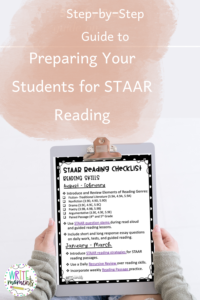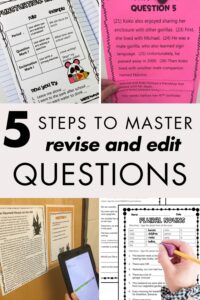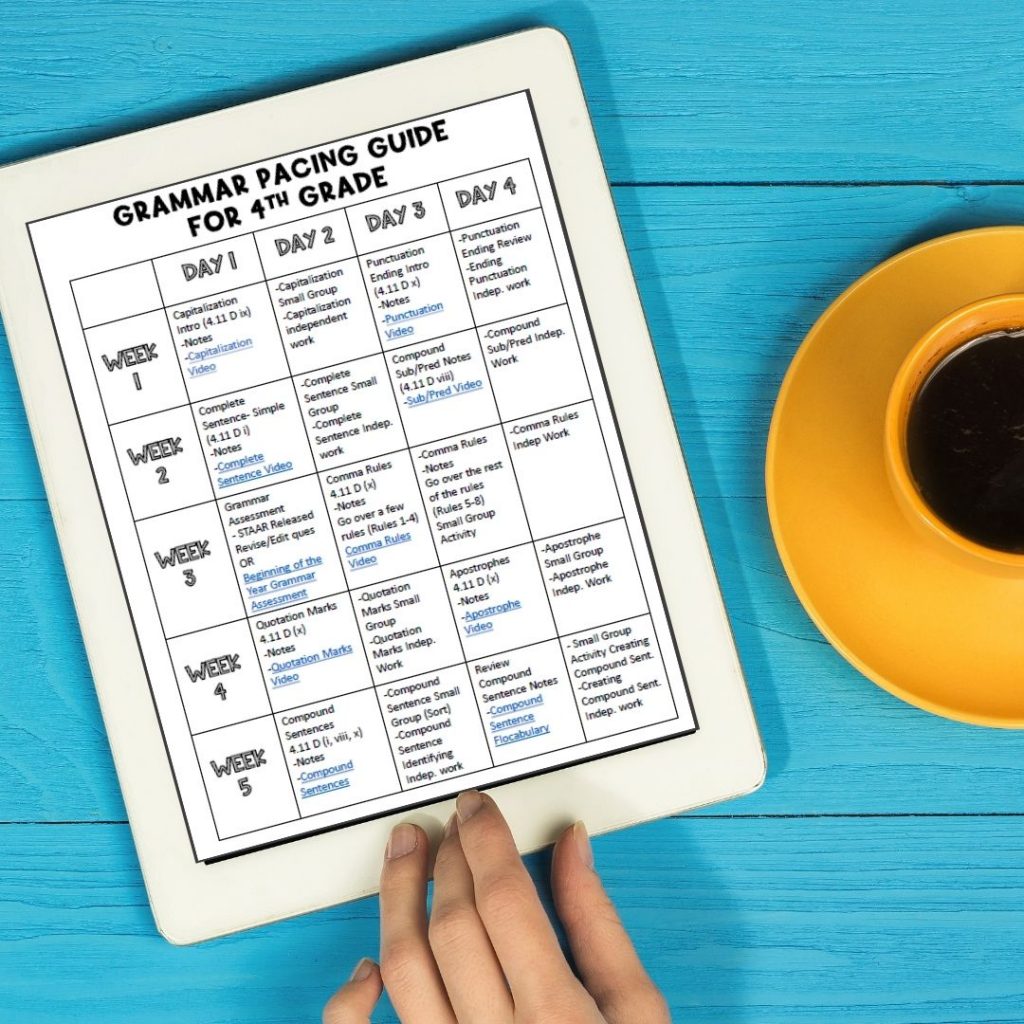Do you use Interactive Writing Notebooks in your upper elementary classroom? If not, you should consider using this valuable resource. There are numerous reasons why an interactive notebook will change the way students learning in your classroom.
Interactive Writing Notebooks can truly make a difference in your upper elementary class, and here’s why:
Students can reference it throughout the year
Anytime throughout the year that students need a refresher on a particular writing skill, they can pull out their notebook to find the original notes.
For example, if a student is working at a station on a grammar game, he can pull out his writing notebook to find the rule to complete the station correctly.
Here’s why grammar games are important for your upper elementary classroom: Grammar Games Blog Post.
Additionally, when working on revise and edit questions, a student can pull out their interactive writing notebook to look up a grammar rule. Even though they can’t use the notebooks on the test, it will help them remember the rule if they look at it more than once.
All in one place
Instead of having different papers to keep track of in a binder or folder, it is helpful for students to have all the writing lessons that you have taught in one location.
Moreover, writing lessons build upon each other, so it is helpful to see the progression of lessons in the notebook.
Also, if a student is absent, you can have another student glue in the notes for that day. Then the student will have the lesson when they return to school.
Visual Learners
Interactive notebooks are imperative for the visual and kinesthetic learner.
Many students are visual learners. They have to see the rule instead of just hearing the teacher explain the rule.
Also, since the notes are already printed and ready to glue in, it makes it easier for students who struggle to copy their teacher’s notes. These students can simply follow along and highlight important information instead of trying to keep up and copy everything the teacher writes.
Interactive Writing Notebooks give students the chance to practice the skill. The teacher scans the practice area in the notebook to see what students are not understanding. Then she can pull them over to a small group to reteach the lesson.
Composition Help
Many students struggle with composition writing in class. They get stuck on writing a beginning, using the right word, or writing a conclusion.
While students are writing in class, they can use their interactive writing notebooks to help them if they get stuck. They can go back to their notes on composition writing to help inspire their writing.
For example, when a student is starting out their writing, they can pull out their writing notebook to look at the notes on great beginnings. They can choose an interesting way to start their essay.
Study Tool
Students can take their Writing Notebooks home before the STAAR Writing Test (or any other standardized test) to look over the grammar rules and writing strategies that they have learned throughout the year.
Parents can help students study by going over the rules in the Interactive Writing Notebooks.
I have had a lot of success using my STAAR Writing Notebook in my fourth grade classroom. It includes grammar rules, revising strategies, and expository writing tips. My students reference their Interactive Writing Notebooks throughout the year
I also have created a 3rd Grade Writing Notebook and 5th Grade Writing Notebook!
Hopefully, you will find that Interactive Writing Notebooks are useful in your own upper elementary classroom.
I also have an amazing FREEBIE that will help fourth grade teachers with their grammar planning. Sign up below for a FREE Grammar Pacing Guide!






